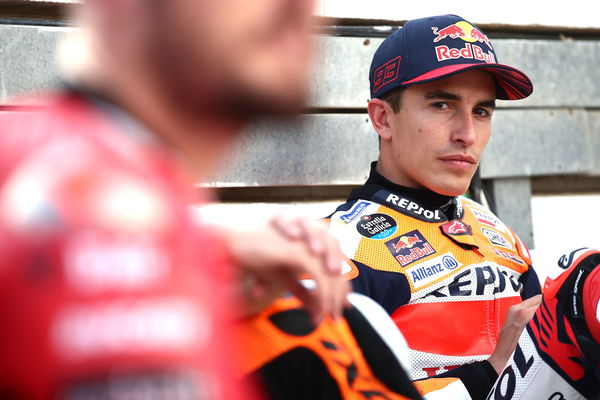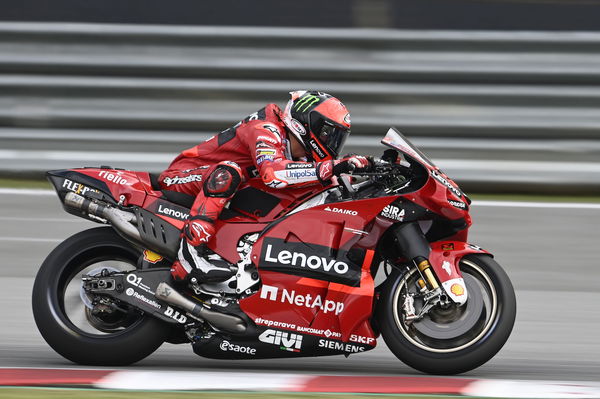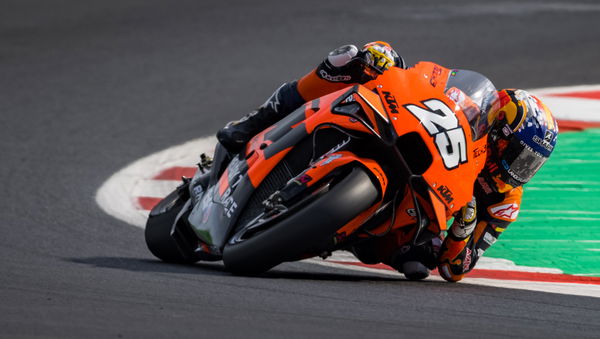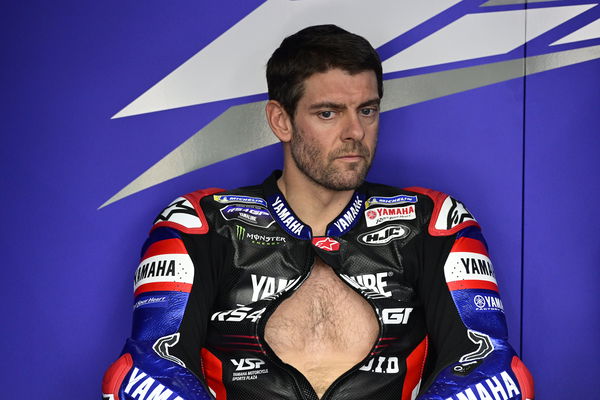MotoGP riders split on ride-height device as Marquez urges it to be banned
Marc Marquez and Joan Mir call for action to be taken against the use of ride-height devices in MotoGP amid fears it is pushing top speeds to unsafe levels

Marc Marquez has urged his fellow MotoGP riders to lobby the Safety Commission to get the controversial ‘ride-height/holeshot device’ banned amid fears it is pushing top speeds to unsafe levels.
Pioneered by Ducati, the device - which is activated by the rider to push the suspension down to improve drive and stability - was originally intended to work on the rear at the start of a race to improve getaways, hence the term ‘holeshot’.
However, as rivals caught up to the technology, Ducati expanded it to be used in motion, allowing riders to utilise it to push the rear suspension down out of bends to help slingshot onto a straight. Now, heading into the 2022 MotoGP season, it has developed it for use on the front suspension too.
Though the Ducati device doesn’t break rules outwardly, rival teams have indicated they are aggrieved at having to create their own systems so as not to be left behind in the development race.
At the heart of the concerns are fears the device allows top speeds to reach unwieldy levels, with Suzuki’s Joan Mir predicting a bike will top 370km/h (230mph) for the first time this weekend at the Losail International Circuit, where most record speeds have been recorded previously.
“For me it’s starting to be too much,” the 2020 MotoGP World Champion said. "Every time we arrive faster into the straight; we will reach 370kmph soon. The layouts are the same and for sure it’s more performance.
"Also, on the acceleration side it’s more difficult to make a difference. If you use everything then it’s more performance but it’s not the best thing for safety."
Six-time MotoGP World Champion Marquez, meanwhile, believes it should be banned altogether because it’s an added complication while riding, isn’t relevant to road motorcycle technology and could affect the safety of venues that don’t have such long run-offs.
"For me it’s something that for the future they must remove. I already said last year when I arrived after my injury.
"I think all the riders need to go together (safety commission). Manufacturers will always go more, more and more, but now with more stroke on the rear, more speed, more stroke on the front, it’s difficult to engage on the start procedure.
"For the show we don’t gain anything. Okay it’s prototypes, but for street bikes you don’t need the holeshot. The aerodynamics I agree with because it’s nice and new things, but the holeshot system; always the run-off areas are trying to be increased, you are arriving faster on the brake points and braking later, so for the future there is no sense."
While Fabio Quartararo joined Mir and Marquez in describing the device as 'too much', others are more in favour with Brad Binder saying it is 'just the reality now', while Pecco Bagnaia says he has 'no problems' using it.

The case for and against MotoGP ride height device
It was fairly inevitable the debate over the ride-height device would reach a boiling point.
Ducati has often been at the pinnacle of developing new technology in MotoGP, such as aero wings and the electronics ‘salad box’, but the ride-height device is an innovation that has had rivals pondering ‘why didn’t we think of it first’.
Indeed, Ducati dismisses the concerns as sour grapes on their rivals’ part and one could argue the case against top speeds is partly because other teams don’t want to see the Italian firm - which is already known for its superior top speed advantage - benefiting from even more straight line pace.
Also, bikes are already exceeding 370km/h in race conditions anyway with the benefit of a slipstream, though the question begs as to where you draw the line.
Without a major change in the regulations, MotoGP bikes will only get faster but the gains are often incremental.
The application of the ride-height device is a significant - and visible - boost in a straight line, but does a few more km/h make it less safe? After all, a 320km/h crash can be just as bad as a 370km/h crash… or even a 70km/h.
The Qatar MotoGP, however, will be the ultimate test of these speeds and safety application though as the venue most likely to allow for record-breaking.
If the riders keep it clean, there is no reason for the FIM to clamp down on what is already there… though it may need to have a close look at where teams (or Ducati) could push the boundaries further so as to preempt any more loophole capitalising, rather than react to it as it has done so thus far.











